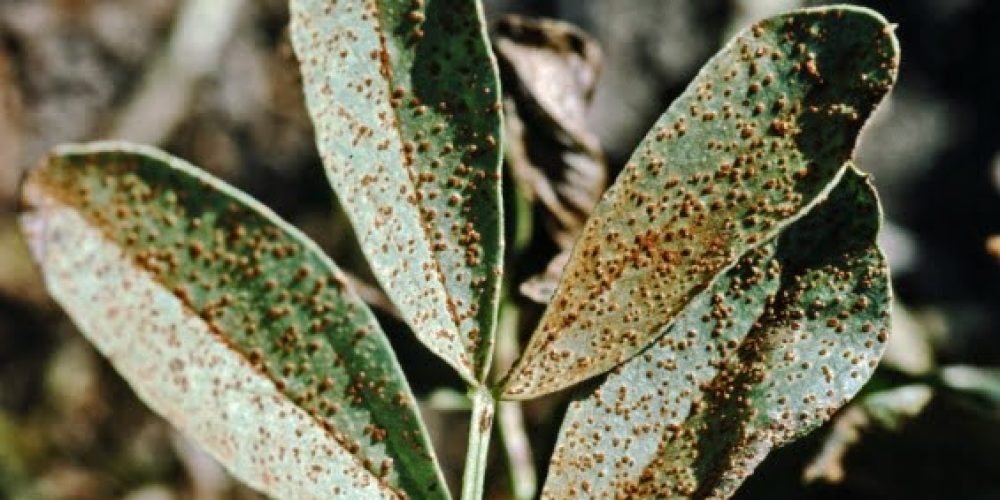Table of contents of the article
ToggleBean rust is a fungal disease that affects bean crops, causing orange/reddish-brown spots on leaves and reducing productivity. In this article on your website, WORLD OF PLANTS, we will discuss how to identify this disease and ways to prevent it.
Symptoms of bean rust disease
- Name of the diseaseFaba bean rust disease
- Scientific name: m.Uromyces viciae – fabae (Pers.) Schroet
- Type: innate
- Disease family: Pucciniaceae
Urinary pustules appear on the surfaces of the leaflets and their petioles, as well as on the stem and pods when the infection is severe. They take on a reddish-brown color and are scattered irregularly. When they grow in size, they can be surrounded by other small pustules. The pimples may be surrounded by a yellow halo. The shape of the pimples is circular on leaves and pods, and elongated on the stem and leaf neck. Teletic pustules form late in the season before plants dry out, primarily on compound leaf petioles, as well as on leaf petioles, and on the leg The pods are dark blackish in colour, and their shape is oval to rectangular. They are smooth and have a shiny appearance because they are covered with the skin of the host plant. They then form a small slit for the exit of the teletic spores.
Causes of bean rust disease
Moderate temperature and dew forms on the surface of the leaves.
Suitable conditions for the spread of bean rust
The optimum temperature for infection to occur is 18-20 °C, and the germination of uremic spores requires the presence of a film of water on the surface of the leaves.
Bean rust disease development cycle
Although the fungus causing bean rust is a long-cycling, mono-host fungus, the spermogenic and acidic phases are rare. In local conditions, only the urethral and teletic phases were observed, and even the teletic phase is relatively few. It is believed that the disease is renewed annually by uremic spores coming from crop residues, or carried by air currents from warmer areas where beans are grown early. The main damage of the disease is caused by the euphorbia phase, which reproduces and gives several generations during one growing season of the bean.
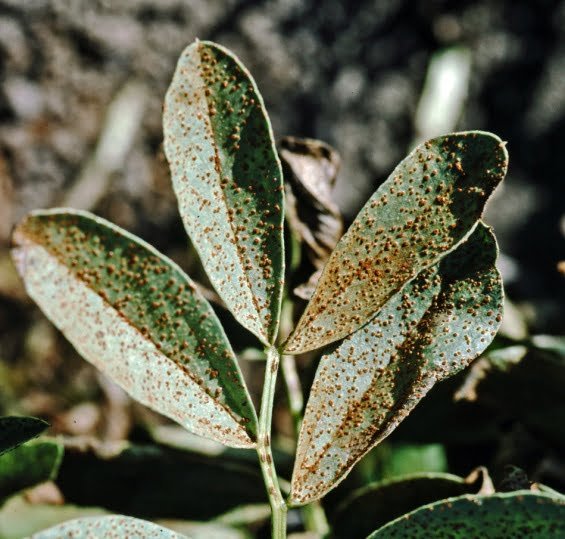
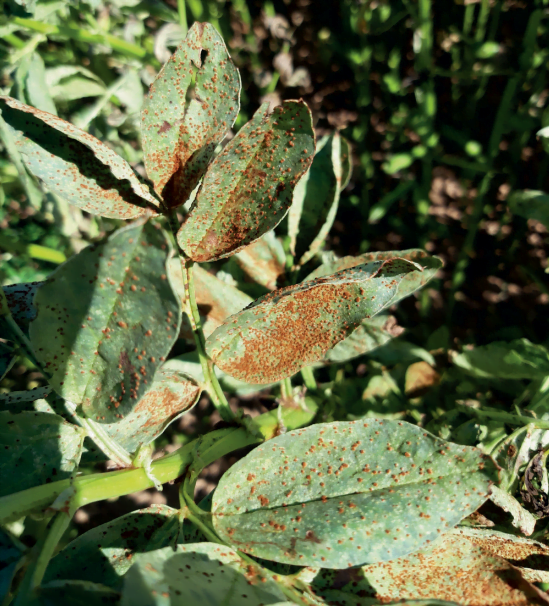
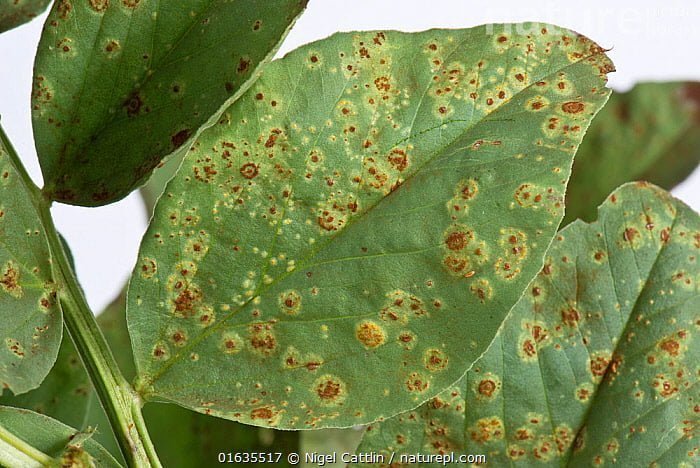
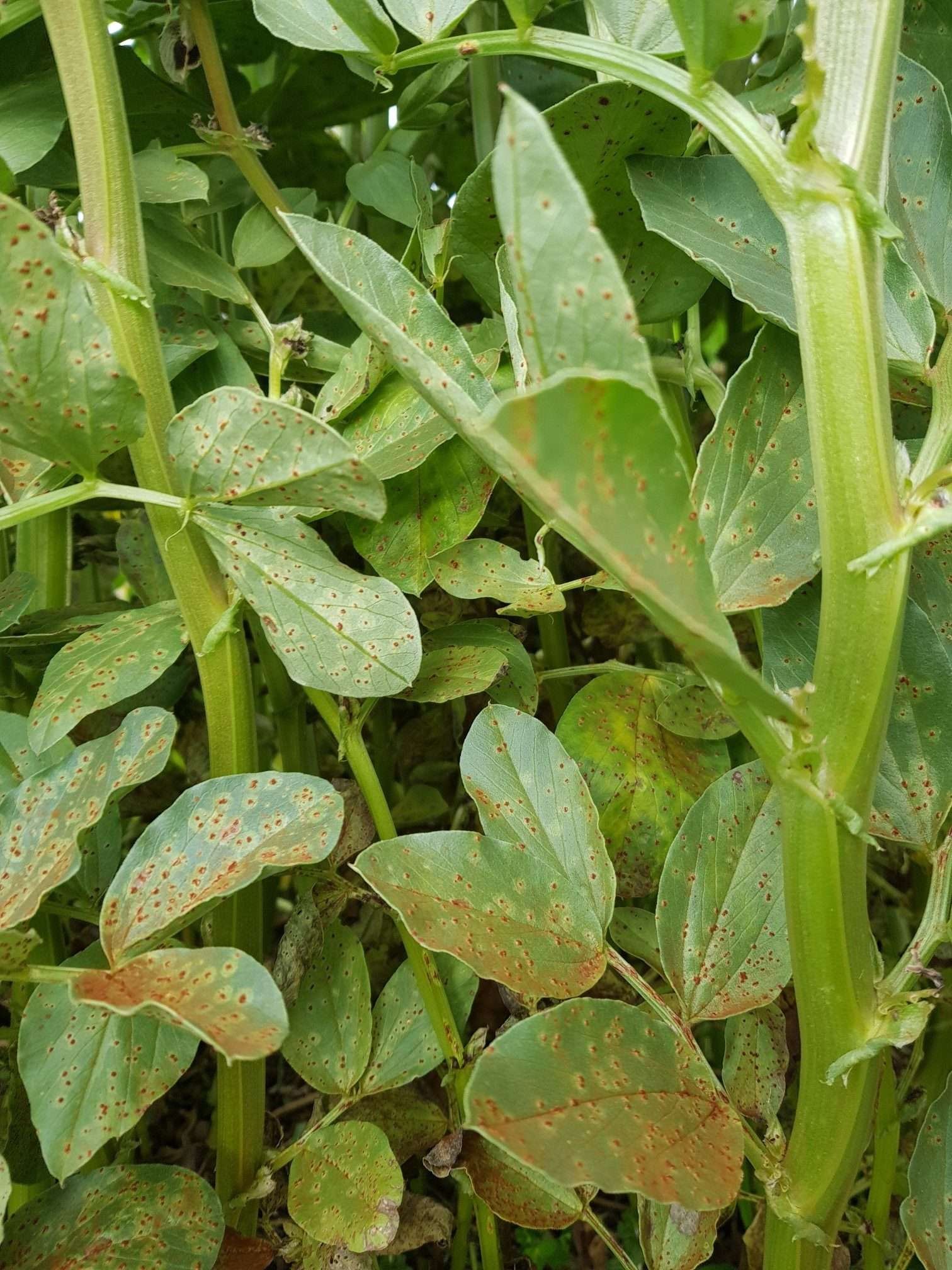
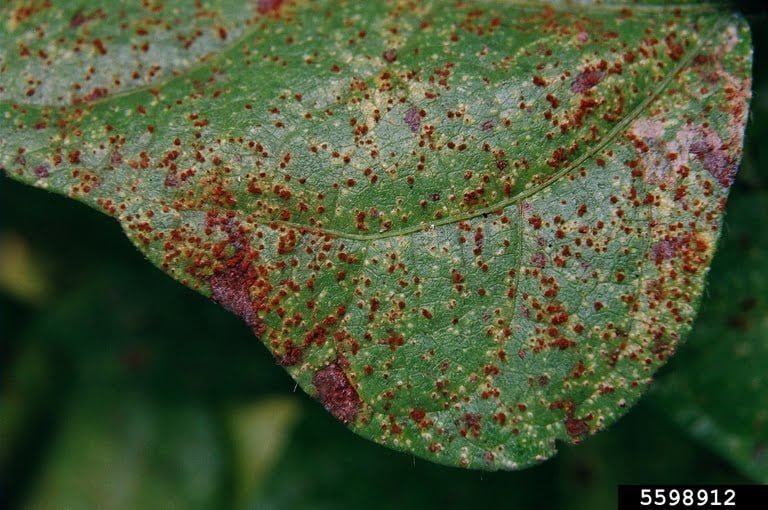
Losses from the spread of bean rust disease
The damage resulting from it depends on the time of its appearance and the weather conditions suitable for its spread. This disease varies greatly in severity from one season to another and almost destroys the crop in the years in which it becomes severe in an epidemic situation.
Control strategy
- Mechanical control
- Physical control (tillage, sanitation, pruning, solarization)
- Fungicides
Preventive measures to prevent the occurrence of bean rust disease
- Considering that this fungus has more than 300 strains, and many of them are often found in the same field, controlling bean rust depends primarily on developing and cultivating varieties that are resistant or tolerant to the strains found in the bean growing area.
- Agricultural operations, such as following an appropriate crop rotation and disposing of infected crop residues, can reduce the amount of initial inoculum in the following season.
- Moderate irrigation, pay attention to phosphate fertilization, and avoid dense agriculture.
Chemical control recommendations
Spray plants when infested with fungicides such as mancozeb, trivorin, or difenoconazole
Anti-membership recommendations
Some research has indicated the success of biological control of bean rust using some types of bacteria, such as Bacillus subtilis strain 1-APPL, Pantoea agglomerans B1, and Stenotrophomonas maltophilia C3.
In conclusion, we would like to note that we, at the world of plants website, offer you all the necessary services in the world of plants, we provide all farmers and those interested in plants with three main services::-
- Artificial intelligence consulting service to help you identify diseases that affect plants and how to deal with them.
- Blog about plants, plant diseases and care of various crops ... You are currently browsing one of her articles right now.
- An application that provides agricultural consultations to clients, as well as a service for imaging diseases and knowing their treatment for free – Click to download the Android version from Google Play Store، Click to download the IOS version from the Apple App Store.
the reviewer :
Bean diseases (bean rust disease) - almerja
Faba bean rust disease - almerja
Diseases of leguminous vegetables - pdf file




